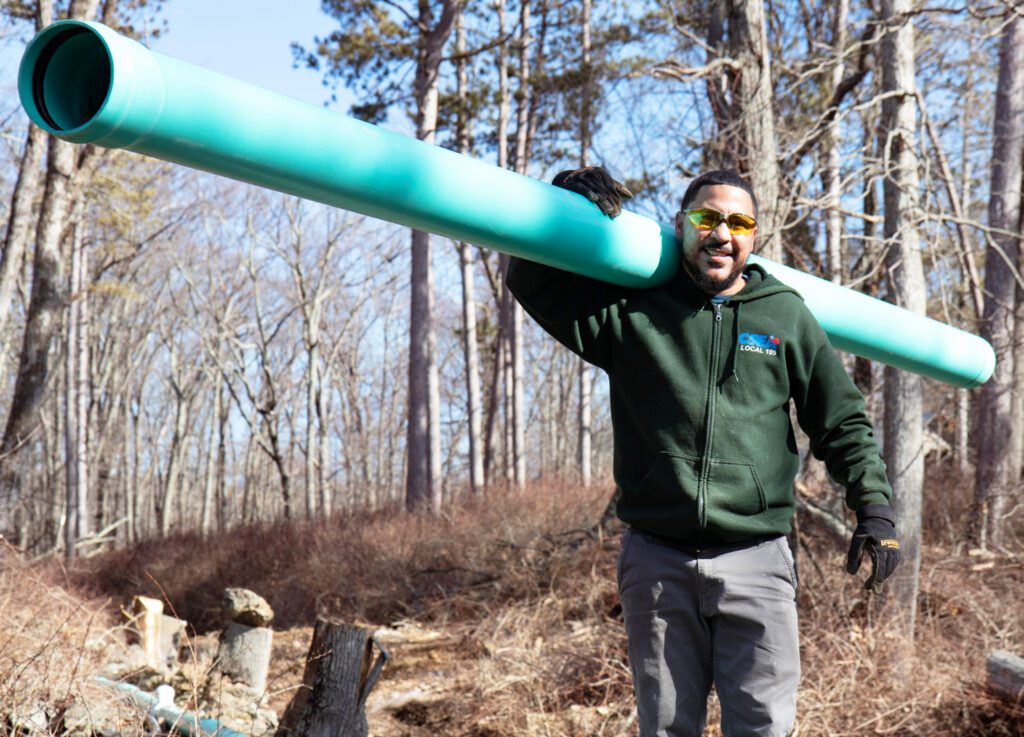
Commission, carries a new piece of pipe. He recently completed the NYS
& CSEA Partnership for Education and Training’s Applied Skills Trades
Program, which trains state employees in several trades, including the
plumber and steamfitter program that Gerena completed. See page 10-12
for more. (Photo by Jessica Ladlee)